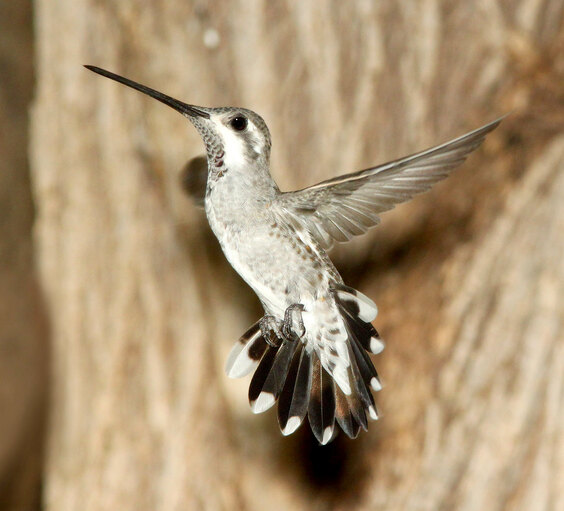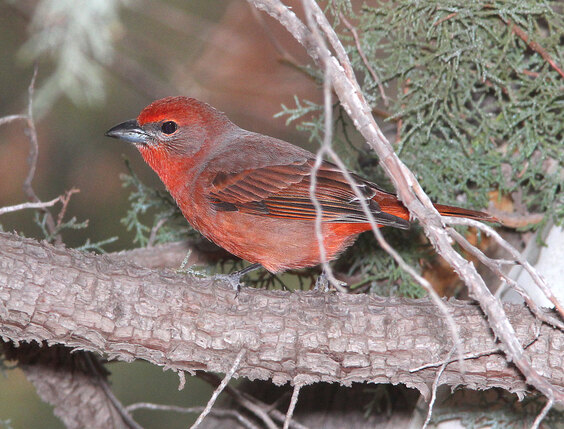
View looking towards the Voluntary Conservation Area, Parque la Colorada in Alamos, Mexico (photo by Emily Clark).
By Lenin Guerrero Oronia and Eduardo Gómez Limón, Northwest Regional Directorate of the National Commission for Natural Protected Areas (CONANP)
One of the tools for biological diversity conservation in Mexico that has garnered a lot of interest in the last two decades is the Voluntary Conservation Areas (ADVC) certification program. Created through the 1998 reform of the General Law of Ecological Balance and Environmental Protection, this volunteer program is fundamental to expand protected areas in the country and preserve natural resources.
An ADVC refers to land in Mexico whose owners have voluntarily decided to allocate it to conservation. It also seeks legal recognition through an official certification, a relatively simple process carried out through the National Commission for Natural Protected Areas (CONANP). Essentially, an ADVC is a natural space without land-use change. Trees are not cut down, and other important land features including mountains and water sources, as well as sacred cultural sites are respected. In general, the ADVC are not opposed to livestock or hunting. Instead, they can regulate these activities. The main purpose is their contribution as a safeguard of ecosystem services, such as soil erosion control, as a strategy to improve the quality and quantity of water captured, mitigating the effects of climate change, and helping to conserve species, especially those that are at risk.
Since the certification process is so adaptable, the ADVCs represent a broad range of sites, making it an important tool to help CONANP manage a range of natural spaces for conservation. However, it is necessary to mention that each ADVC is unique, and requires planning from the landowner and CONANP to develop conservation objectives, goals, and management strategies. To highlight this diversity, here are three case studies of ADVCs established in the State of Sonora.
Rancho El Aribabi (Imuris)
Located in the municipality of Ímuris, in central Sonora, the Aribabi Ranch stands out as a site for ecotourism and scientific research. The owners realized the value of the area for bird watching, and have marketed it towards visitors hoping to see birds like the Golden Eagle, Zone-tailed Hawk, Elegant Trogon, Green Kingfisher, Sinaloa Wren, Thick-billed Kingbird, and Elf Owl.
One of the unique characteristics of this site is the diverse vegetation. Along the banks of the Cocóspera River, ash, elder and poplars grow intertwined with riparian habitat. There are also desert species including saguaro and ocotillo, and mountains dominated by pine and oak. In addition to birds, ocelot and jaguar can be found.
As research and knowledge of its fish, amphibians, and all of its biological systems increase, the ranch has been the location for new records of reptiles, species discovered because of the interest produced by this ADVC.
Parque La Colorada (Alamos)
In southern Sonora, in the transition zone between the city of Álamos and the Sierra de Álamos and Río Cuchujaqui Flora and Fauna Protection Area, the popular Parque La Colorada is located. The ADVC is managed by a non-profit association that saw the need to conserve ecosystems and at the same time provide Álamos with a park for the enjoyment and recreation of local families.
Parque La Colorada is considered a successful environmental education and ecotourism project, as it has been adopted by the Alamos community as the city’s natural park, a tourist attraction that rivals any other in this colonial city.
Those who visit it enjoy its interpretive trails and spectacular views, also offering an excellent site for bird watching where people can see Black-throated Magpie-Jay, Russet-crowned Motmot, Mexican Parrotlet, Squirrel Cuckoo, Plain-capped Starthroat, Rufous-bellied Chachalaca, and Yellow Grosbeak, among others.
Likewise, the vegetation in the 112 hectares of park is made up of tropical dry forest and low deciduous forest species, including Palo Santo, Chalate or Amapa.
La Mariquita (Cananea)
Unlike El Aribabi, which is operated by its owners, the ADVC ‘La Mariquita’ is managed by the National Institute of Astrophysics, Optics and Electronics and is located in the northern region of the state of Sonora, 13 kilometers north of Cananea and 30 kilometers south of the Arizona border. It has an area of more than two thousand hectares and stands out because the Guillermo Haro Astrophysical Observatory is located on this site, operating since 1987.
Recognized as an optimal site for astronomical observation due to its dark skies, La Mariquita is part of the “sky islands,” a name given to these mountain formations that rise several meters above sea level. This provides a refuge and conservation area to flora and fauna, also serving as the source of the hydrological basins of the Sonora, San Pedro and Magdalena rivers.
The vegetation of this ADVC is grassland, oak, aspen and a leafy pine called “Ayacahuite.” Its fauna is composed of a variety of species, many of them under some category of special protection, such as the Golden Eagle, who nests in the mountains and is a threatened species. Other notable species include Montezuma Quail, Steller’s Jay and Hepatic Tanager.
A positive outlook
The Northwest and Upper Gulf of California Regional Directorate of CONANP have certified 10 Voluntary Conservation Areas in Sonora and 5 in Sinaloa through 2019. With continued interest in the program, we expect that the number of ADVCs will continue to increase and expand the protected areas in Mexico.
As the legal implications of this designation are increasingly understood by landowners, such as the continued ownership of the property by either private citizens or ejidos, the ADVC is a powerful tool for conservation efforts in Mexico.


 English
English  Español
Español 

